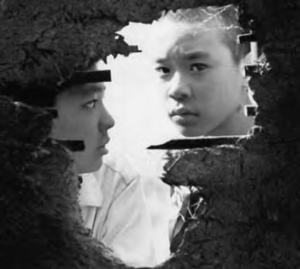
www.amazon.com
While supporters maintain that films increase our sense of history through imagined description, critics worry that films may fictionalize and misuse historical facts.1 Films provide historical subject matter and plots, structured around historically significant ideas and developed in depth with applications to an interpretation of the contemporary world, thus creating a far more substantive historiography than any written textbook.2 They present and develop a different kind of truth, through “proximate, appropriate characters, situations, and images.”3 Films on the Korean War are an excellent resource for history educators to introduce students to the visualized world of 1950s Korea.
Since the stalemate finale of the Korean War resulted in no hero, no victory, and no breakthrough episodes, mainstream filmmakers have constructed “bland” war narratives that are as forgettable as the nickname, “the Forgotten War,” implies.
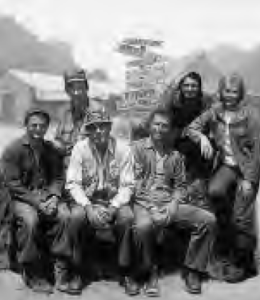
We aim to introduce a Korean film which, we believe, is one of the most suitable resources for secondary educators to encourage students to better understand the Korean War. Whether one sees the typical Hollywood-made melodrama, The Bridges at Toko-Ri4 or the most popular—but dated—Korean War film and television series, M*A*PH,5 individuals are so accustomed to general war stories that few interesting episodes remain. Most of these films deal with conventional stories of any war, so all look alike.6 They also reflect more about what was going on in the United States at the time they were made, than they portray about the Korean War. Since the stalemate finale of the Korean War resulted in no hero, no victory, and no breakthrough episodes, mainstream filmmakers have constructed “bland” war narratives that are as forgettable as the nickname, “the Forgotten War,” implies.
The “forgettable” nature of the Korean War has meant that a large and ever-increasing number of Americans do not recognize the impact of the Korean War on their lives. History educators trivialize the events at best, most often failing to communicate to younger generations what this war means for the United States then and now. Generally, the Korean War has become a mere mention in most U.S. History classrooms; its primary significance is as an example in the customary canon of containing Communism in East Asia through “Limited Warfare.”
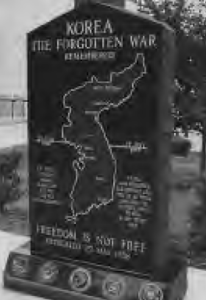
Source: the Korean War Veterans Association
Website: www.kwva.org.
This war left indelible marks on the Korean Peninsula and the world surrounding it. The entire peninsula was reduced to rubble, and casualties on both sides were enormous (though as with most wars, subject to conflicting claims). Combatant deaths included as many as 33,000 Americans and 147,000 South Korean and United Nations troops.7 Estimates of the number of Communist soldiers killed range as high as 1,420,000-520,000 North Koreans and 900,000 Chinese—though these claims have been challenged.
Since 1953, the United States military has provided the majority of troops, maintaining the dividing line between North and South Korea. Currently there are 37,000 Americans, representing all branches of the United States military, committed to the demilitarized zone at the 38th paralle1.8 Technically, the peninsula remains in a state of war restrained by an armistice. This fact alone provides sufficient justification for reconceptualizing and reprioritizing the curriculum regarding the Korean War. There is also a need to bring “other” views on the war period into the classroom. These perspectives, especially from Koreans, humanize the featureless textbook portrayals. To develop empathy, American students need to learn that other people in the world are more like them than they might have realized.
Lee, who also wrote the screenplay, dedicates this film to “our grandparents who never lost and gave up hope in the midst of hardships and despair” because he believes that the stories, based on the memory of his father, can be about all Koreans whose generation went through the Korean War.
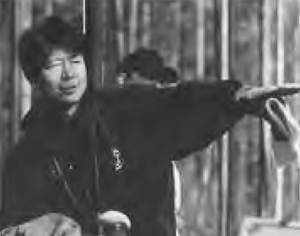
www.metroactive.com
Recently we discovered Korean director Kwang-mo Lee’s film, Spring in My Hometown,9 which makes a splash in this sea of bland interpretation about the Korean War. This film depicts both the overt and subtle impacts of the war on Koreans from the point of view of two young Korean boys. As the film unfolds, Korean villagers are dealing with their vulnerability as they confront the unpredictable threats of bombing and combat.
Lee, who also wrote the screenplay, dedicates this film to “our grandparents who never lost and gave up hope in the midst of hardships and despair” because he believes that the stories, based on the memory of his father, can be about all Koreans whose generation went through the Korean War. This film seems to successfully meet the need of history teachers in three concerns: (1) the recent release, (2) English subtitles, and (3) the facility of on-line information and purchase. We need to point out that this film represents the oppositional perspective of 1990s Koreans. Regarding the artistic quality of the film, it won international recognition in the Directors’ Fortnight section of the Cannes Film Festival and the Gold Prize for new directors at the Tokyo Film Festival. For English-speaking audiences, subtitled copies are available and accessible in public libraries and e-commerce merchandise. In addition, stills, film reviews, and interviews with the director are also available on-line.10 These materials are valuable resources for teachers who want to supplement the film with written materials.
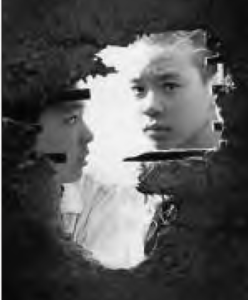
Most of the story is seen through the eyes of two young Korean boys, Seong-Min and Changhee. History teachers may expect that their adolescent students can empathize with the young protagonists. The main characters are similar in age to the students for whom we recommend this film. Also, feelings of friendship, happiness, hurt, and betrayal are universal in nature. The depictions of these two characters transcend geographic regions and time periods because, while the situations they are confronted with might be different for children today, the emotional responses are much the same. Seong-Min and Changhee depict the time as splendid childhood days, as the Korean title, Beautiful Season, indicates. No matter how horrible their experiences, in the long run, they end up with memories that are both wonderful and sorrowful. Overall, the film addresses the ironical connotation of “Spring in My Hometown” in that no one can relive such a splendid childhood, and no one wants to return to the hardest time in modern Korean history.
Director Kwang-mo Lee uses a long-shot style of cinematography that keeps viewers some distance from the events. This distance seems to provide a more objective perspective with which viewers can incorporate personal emotion in recreated life with the historical reality.
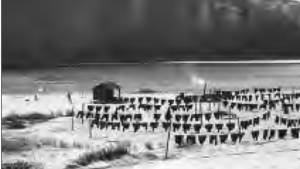
The film is set in a small village in Korea during the final stage of the Korean War (1950-3). Seong-Min and Changhee are close friends who live in this village, where the entire lives of village people are being changed by the War and the close presence of an American military camp. Seong-Min’s father works at the army base, thanks to his daughter’s friendships with the American soldiers there. The family prospers, which would not have been the case for most Koreans during the war. In fact, Changhee’s family has a more typical experience. His father, conscripted by the Korean military, can provide no financial support for his family. They are forced to rent a room in Seong-Min’s house. Changhee’s mother does laundry for some American soldiers to earn what little money they have. Washing someone else’s clothes, especially for American G.I.’s, was one of the more common housekeeping jobs for wartime Korean women. It is also a significant memory of the war and daily life at that time for most Koreans.
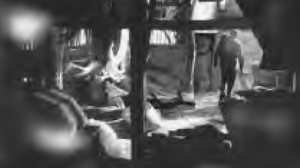
Seong-min and Changhee are carefree young boys who spend their days roaming the village looking for something to do. One day they discover that the old abandoned mill on the outskirts of the village is being used for sexual liaisons between American soldiers and Korean women. The boys go to the mill regularly to secretly watch the activities there. One day everything changes for the boys when they discover Changhee’s mother with a soldier. When someone stole the laundry that Changhee’s mother had been responsible for, she had no way to repay the owners for their losses. Seong-Min’s father arranged for her to pay off her debt through prostitution. These realizations changed the lives of both boys.
We discover three main themes in this film regarding content and historical context. First of all, protagonists in the film struggle in many ways to survive during wartime. The war’s side effects on civilians seem irrevocable. When Changhee’s mother turns to prostitution because she cannot reimburse the owners for their lost laundry, one may wonder why she did not make a different choice. In a history classroom, this question will inspire discussion in which students attempt to understand the socio-cultural context of the Korean War and its effect on the common people.
Director Kwang-mo Lee uses a long-shot style of cinematography that keeps viewers some distance from the events. This distance seems to provide a more objective perspective with which viewers can incorporate personal emotion in recreated life with the historical reality. The director is not afraid to show the dark side of the war but at the same time intends to portray the war of the voiceless people “who never lost hope,” as the closing title suggests.
Through the eyes of Changhee, we watch the tragic incident and deeply sympathize with the young boy. Once identified with him, we foresee the problematic conditions that he faces and keep watching until we know how the story ends. In this process, viewers are able to develop historical empathy. Empathy is a mindset, defined by Ashby and Lee,11 as a place “where we get to when we have successfully reconstructed other peoples’ beliefs, values, goals, and attendant feelings.” Peeping through the hole of an abandoned mill, students may start to realize that the world could never be the same to these young boys. This empathetic approach helps them further the idea that the innocence of childhood becomes victim to ideological conflicts. Students may be able to more deeply understand why the Korean War is perceived as the first conflict of the Cold War era.
By grappling with the needs and experiences of others, student viewers can share the experiences and perspectives of unfamiliar people and their world through visualized contexts and begin to understand differences. Given this controversial film text, students are able to raise questions about the conventional approach to the war by Hollywood filmmakers.
The review of literature and films on the Korean War is a stark reminder that Korean War films have not gained major attention from either popular imagination or film production. Paul Edwards goes on to note that this inattention has to do with the idea that the Korean War was a war of governments, while World War II, for example, was perceived as a people’s war.12 Therefore, Hollywood filmmakers construct the much “blander” war narratives that describe little about what was happening to anyone actually involved in the war. Dozens of films portray young people who are supposed to fight in a foreign country only to contain communism. The ideological claim of this mission seems to discourage screenwriters from developing more complicated plots for enthusiastic triumphs, although several films do reflect the soldiers’ sense of frustration and generate responses such as “I’m stuck here in this stinking Korea.”
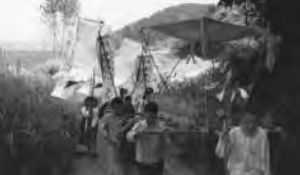
Finally, this film illustrates war’s tragic impact on individuals. After Changhee witnesses the episode between his mother and the soldier, the mill mysteriously burns down and Changhee disappears without a word. His funeral is held with an empty coffin, and a small tomb is made by his friends.
Most Koreans who went through this tragic event still suffer from invisible scars. Innumerable Koreans seek to reunite dispersed family members through public broadcast programs and the governmental exchange project. For some, the horrible war memories hover in the form of flashbacks or have been transformed into anti-Communist sentiments. It is known that some American veterans have reported that Post-Traumatic Stress Disorder (PTSD), related to the Korean War, has become a persistent problem.
Despite the fact that we owe much of our present to anonymous protagonists in the past, it is true that there remains “some atavistic craving for something beyond reality, for epic and ‘superhero’ which impels the public beyond academic history.”13 This is the reason why Hollywood films on the Korean War are filled with great American soldiers and heroes rescuing innocent orphans and refugees. However, Koreans are definitely not outsiders, bystanders, or voiceless victims. They have their own stories to tell. Although this film describes vulnerable civilian lives during the Korean War, its portrayal of verisimilitude is realistic enough for the delicate position both of protagonists and victims. Therefore it seems to respond to the need of history educators who will give their students the opportunity to remember “the Forgotten War.”
Educators may make use of this film in an advanced history class in middle or high school, or for college students. The film opens a window to the reconstructed past of 1950s Korea, and offers the oppositional text for moral argument and historical empathy. Students may broaden their understanding of the Korean War to the extent that they are given opportunities to explore what the canonical history of the Korean War, including the containment policy, limited warfare, and the Cold War conflict, does not tell. Watching and discussing the historical issues presented in a foreign film may enhance students’ cross-cultural perspectives. In addition, students are able to explore the historical significance in different texts and with different interpretations.
We expect that this film will enable young students to revisit the issues of the war beyond merely brief mention in a textbook, and to contemplate Americans and Koreans as “real” people, in both the 1950s and the present.
Students today confront a variety of historical interpretations outside of classrooms as a part of their daily lives. History educators should respond to the call for “tasks of building the systematic development of historical thinking into our own school curricula.”14 This paper contributes to that effort in an attempt to develop the rationale of teaching the Korean War using a popular film. We expect that this film will enable young students to revisit the issues of the war beyond merely brief mention in a textbook, and to contemplate Americans and Koreans as “real” people, in both the 1950s and the present.
As Koreans have constantly struggled with postwar problems and military tensions caused by division of nations, younger generations of Americans have, for the most part, forgotten the Korean War. This is problematic for a number of reasons. History educators need to explain to students that, in a way, the United States is still involved in the Korean conflict. This is evidenced by the large U.S. military presence in South Korea. In light of the ongoing commitments of manpower and resources, students must be encouraged to examine the events of the past which anchor the current situation.
NOTES
1. Mark Carnes, Past Imperfect: History According to the Movies (New York: H. Holt, 1995); Robert Toplin, History by Hollywood: The Use and Abuse of the American Past (Urbana: University of Illinois Press, 1996).
2. Hayden White, “Historiography and Historiophoty,” American Historical Review 93 (1988): 1193-9.
3. Robert Rosenstone, Revisioning History: Film and the Construction of a New Past (Princeton: Princeton University Press, 1995), p. 209.
4. The Bridges at Toko-Ri, Mark Robson, 102 min., 1954, film.
5. M*A *S*H, Robert Altman, 116 min., 1970, film.
6. Most of the Hollywood films on the Korean War are too generalized and rarely incorporate Korean perspectives. Although this article does not address the possibility of using these other films as educational tools, a more substantive comparison of dated films with Korean-made films encourages students to think about production modes, dates, and text biases.
7. In June 2000, the U.S. Department of Defense revised the number of Americans killed in the conflict from 54,246 to 36,940, to include 33,000 actual battlefield deaths. The higher figure, widely cited for nearly half a century, mistakenly included all 20,617 non-battlefield U.S. military deaths that had occurred worldwide during the three-year conflict. Only 3,275 non-battlefield deaths, due to accident or disease, occurred in Korea.
8. The following sources show the current statistics:
http://foreign.senate.gov/ press/01/011212.html
http://foreign.senate.gov/press/01/011212html
http://asia.scmp.com/asianews/ZZZINW1H5XC.html.
9. Spring in My Hometown, directed and written by Kwang-mo Lee. Produced by the Korean Film Art Center/ Baekdudaegan , Ltd. 124 min., 1998.
10. Further information is available at the following Web sites:
http://koreanfilm.org/spring.html
http://www.usc.edu/isd/archives/asianfilm/korea/spring
http://www.pokerindustries.com/acatalog/springhometownvcd.htm
http://www.emb-korea.ottawa.on.ca/culture/movies/spring.htm
http://indigo.ie/—obrien/simh.htm.
11. Rosalyn Ashby and Peter Lee, “Children’s Concepts of Empathy and Understanding in History,” in The History Curriculum for Teachers, Portal Christopher (Philadelphia: Falmer Press, 1987), p. 63.
12. Paul Edwards, A Guide to Films on the Korean War (Westport: Greenwood Press, 1997).
13. Paul Dukes, “Fictory or Faction?” History Today 49 (1999): pp. 24-6.
14. Peter Seixas, “Confronting the Moral Frames of Popular Film: Young People Respond to Historical Revisionism,” American Journal of Education 102 (1994): pp. 261-85.

